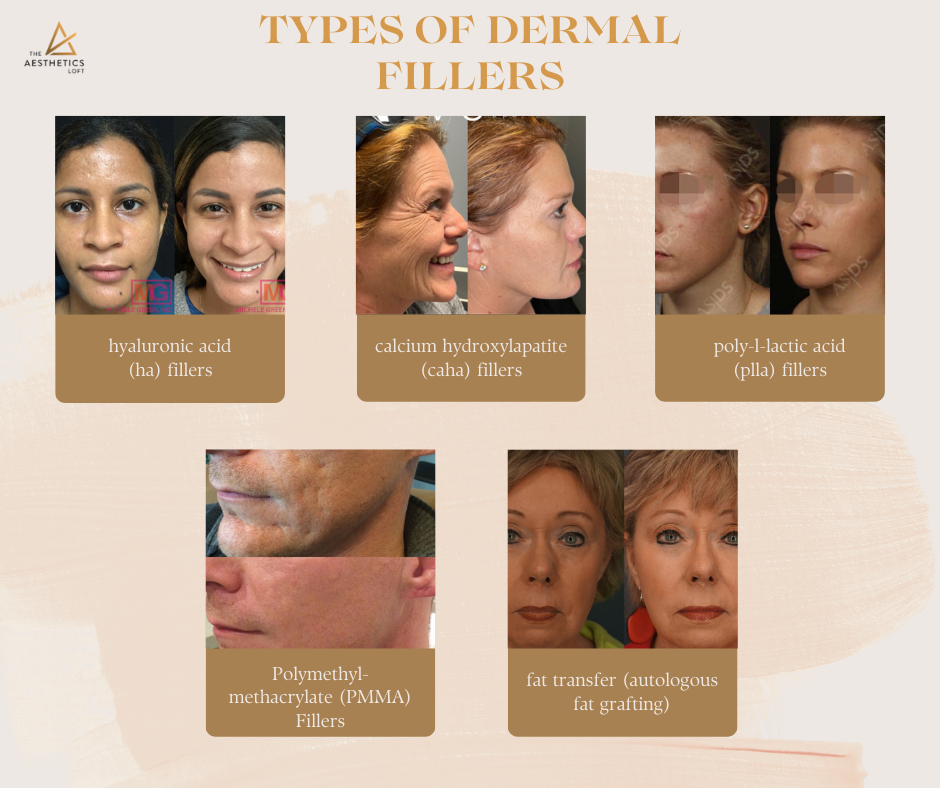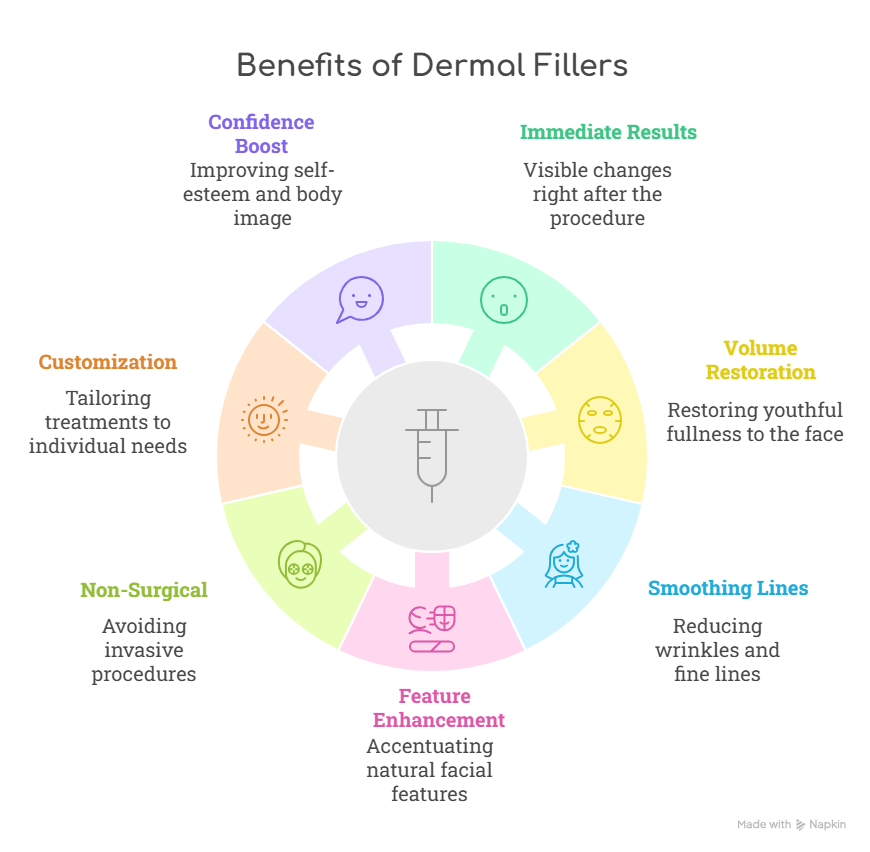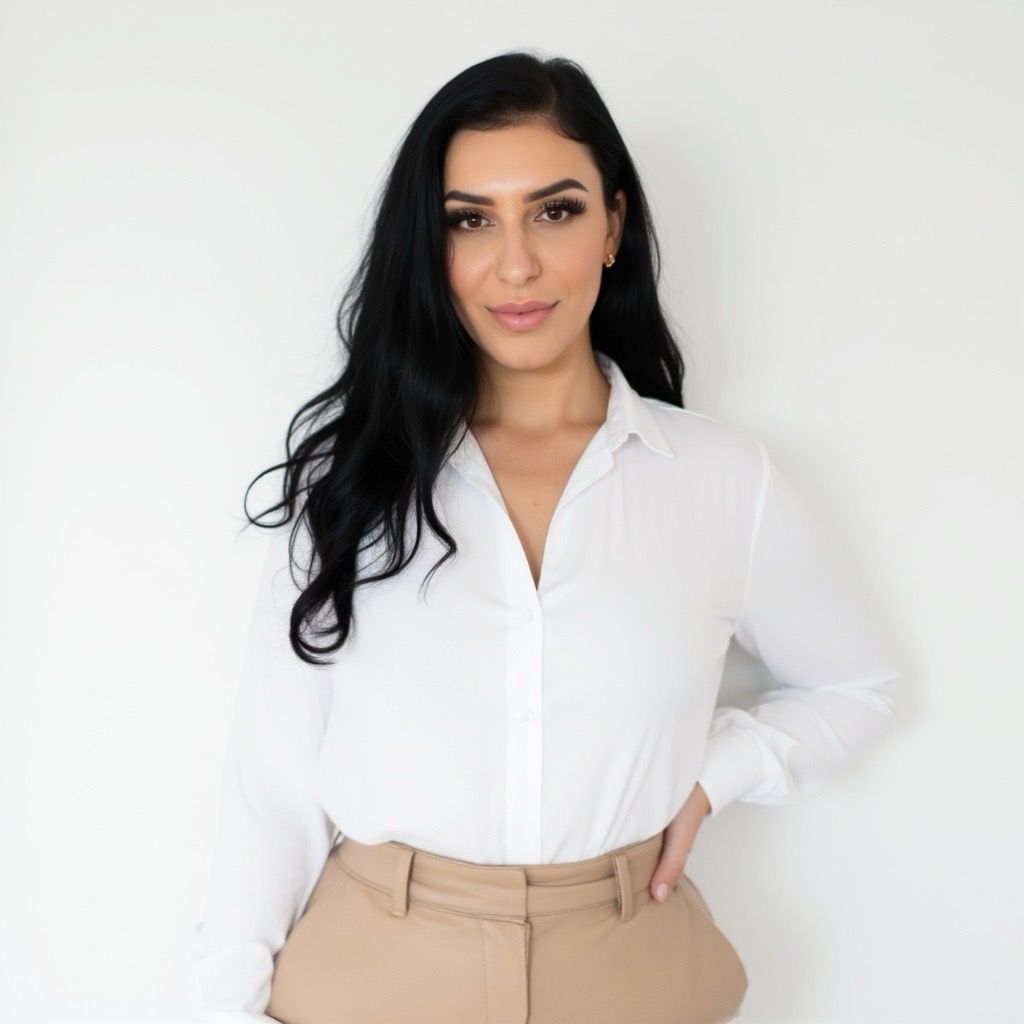Aging, stress, and sun exposure can change how our face looks — causing fine lines, hollow cheeks, or thinning lips. While skincare products help at the surface, they can’t replace lost volume or smooth deep folds. That’s where dermal fillers come in.
Dermal fillers are injectable treatments that restore shape, smooth wrinkles, and enhance features without surgery. They’re popular because they deliver fast, natural-looking results with minimal recovery time.
This guide explains what dermal fillers are, how they work, what types are available, and why people choose them. By the end, you’ll know if fillers might be a good option for your personal skin goals. Let’s get started.
Understanding Dermal Fillers
Dermal fillers are injectable gels placed beneath the skin to improve facial shape and smoothness without surgery. They’re designed to add volume or support in areas where the skin has thinned or where tissue has shifted with age.
Unlike Botox, which works by limiting muscle movement to soften wrinkles, fillers work by physically filling space under the skin or stimulating the body’s natural repair processes. The choice between Botox and fillers depends on whether wrinkles come from muscle activity or structural changes.
Fillers come in different formulas, such as hyaluronic acid, calcium-based gels, or collagen stimulators — each selected depending on where they’re used and the kind of support needed. We’ll cover these types in detail later.
How Dermal Fillers Work
Fillers are injected at precise skin depths, depending on the area and the product. Here’s how they work at the skin level:
- Physical Volume Replacement: Hyaluronic acid or calcium-based fillers add volume by occupying space under the skin, immediately lifting and supporting sagging or hollow areas.
- Water Attraction and Retention: Hyaluronic acid fillers attract water molecules, increasing hydration and plumpness in the treated area.
- Collagen Stimulation: Some fillers, like poly-L-lactic acid, trigger the body’s collagen production over time, improving skin density and thickness gradually.
- Structural Reinforcement: In deeper injections (like along the jawline or cheeks), thicker fillers act almost like an internal scaffold, adding definition and shape where bone or fat has been lost.
The provider controls the placement and amount with small, precise injections to ensure smooth, balanced, and natural-looking results.
Types of Dermal Fillers

Dermal fillers come in several formulations, each designed to work differently in the skin. They vary by what they’re made of, how they behave once injected, and how they interact with skin tissues. Below is a clear, practical overview.
Hyaluronic Acid (HA) Fillers
Hyaluronic acid is a sugar the body naturally produces to hold moisture in the skin and joints. In filler form, it’s a soft gel injected under the skin, where it holds water and adds volume to specific areas.
Depending on its thickness, it can be used to plump lips, fill under-eye hollows, soften smile lines, or add definition to the cheeks. Over time, the body gradually absorbs the HA, making it a temporary option.
Calcium Hydroxylapatite (CaHA) Fillers
Calcium hydroxylapatite contains small calcium particles suspended in a gel. Injected deeper into the skin, it provides immediate volume and creates a scaffold that encourages natural tissue support.
This type is often chosen for areas needing stronger lift or shape, such as the cheeks, jawline, or deeper wrinkles. The calcium particles are slowly absorbed, leaving behind the supportive framework.
Poly-L-lactic Acid (PLLA) Fillers
Poly-L-lactic acid is a synthetic material that works by stimulating collagen production rather than directly filling space. Delivered through a series of treatments, it gradually thickens and strengthens the skin.
PLLA is typically used for facial areas with volume loss, like the cheeks, temples, and lower face, where slow, natural-looking improvement is preferred.
Polymethyl-methacrylate (PMMA) Fillers
PMMA is made of tiny, non-absorbable microspheres suspended in gel. Once injected, the gel provides initial support while the microspheres stay in place long-term, creating a stable framework within the tissue.
It’s mainly used in areas needing durable correction, such as deep folds or acne scars, where long-lasting structural support is important.
Fat Transfer (Autologous Fat Grafting)
Fat transfer involves using the patient’s own fat, usually taken from the abdomen or thighs, which is processed and reinjected into the face. The transferred fat integrates with the tissue, though some of it is naturally reabsorbed.
This method is used for restoring natural volume in the cheeks, lips, temples, or under the eyes, combining volume restoration with a natural approach.
Benefits of Dermal Fillers
Dermal fillers offer a non-surgical way to improve facial appearance by targeting volume loss, wrinkles, and uneven contours. Here’s a clear look at the main benefits they provide.

1. Immediate, Noticeable Results
Fillers deliver visible improvement right after treatment. Hollow areas look fuller, lines appear softer, and facial features regain a smoother, balanced look. There’s no waiting for weeks to see changes — most people walk out seeing a difference.
2. Restore Volume and Shape
As we age, fat loss, bone changes, and skin thinning reduce facial fullness. Fillers replace this lost volume, restoring natural curves to the cheeks, jawline, temples, and lips. This helps bring back facial balance without surgery.
3. Smooth Lines and Folds
Deep folds around the mouth, smile lines, and marionette lines can make the face look tired or aged. Fillers fill these lines from within, making the skin’s surface appear smoother and more youthful.
4. Enhance Facial Features
Beyond fixing age-related concerns, fillers can improve natural features. They can shape lips, define cheekbones, contour the chin, or refine the nose profile, offering subtle enhancement that respects natural proportions.
5. Non-Surgical with Little Downtime
Filler treatments are done in-office, often in under an hour, with minimal discomfort and short recovery time. Most people return to normal activities the same day, making fillers a convenient option compared to surgical procedures.
6. Customizable and Adjustable
Fillers can be fine-tuned to match individual goals. They can be gradually built over multiple sessions, and in the case of hyaluronic acid fillers, they can be adjusted or dissolved if needed — offering flexibility and control.
7. Boost in Confidence and Self-Image
When facial balance is restored and lines are softened, many people feel more confident and refreshed. It’s not about changing who you are, but about helping you look and feel like your best, well-rested self.
Risks and Considerations
While dermal fillers are generally safe when done by trained professionals, they are still medical treatments — and like any procedure, they come with risks. It’s important to understand these clearly before deciding.
1. Common, Mild Side Effects
After filler injections, it’s normal to experience some mild, temporary effects at the treatment site. These can include:
- Swelling
- Redness
- Bruising
- Tenderness
These usually go away within a few days and don’t require medical treatment.
2. Less Common Complications
In rare cases, fillers can lead to issues that need medical attention. These may include:
- Lumps or uneven texture under the skin
- Filler shifting from the original injection site
- Prolonged swelling or firmness
- Allergic reactions (uncommon, but possible)
3. Vascular Complications (Serious but Rare)
A more serious risk is accidental injection into or near a blood vessel, which can block blood flow. This can cause skin damage and, in very rare cases, affect vision. This is why it’s critical to have fillers done by an experienced medical provider who knows facial anatomy.
4. Importance of a Qualified Provider
Who you choose matters. Fillers should only be injected by licensed, trained professionals — such as dermatologists, plastic surgeons, or certified aesthetic nurses. This helps reduce risks, ensures proper product selection, and provides safe, natural-looking results.
5. Realistic Expectations
Fillers can improve appearance, but they have limits. They won’t match surgical results, stop aging, or transform appearance dramatically. A good provider will help set realistic goals and explain what’s possible — and what’s not.
The Consultation Process
At The Aesthetics Loft, I focus on making sure your consultation is personal and centered on you. We’ll sit down and talk through your goals, concerns, and what you’re hoping to achieve — so I can help guide you toward the best plan.
Facial Assessment
I’ll start by carefully assessing your skin, facial structure, and the areas you want to improve. This helps me decide which type of filler, how much, and which technique will give you the most natural, balanced result.
Personalized Treatment Plan
Based on what we discuss and what I see during your assessment, I’ll recommend a treatment plan designed just for you. Sometimes this may involve fillers alone; other times, we might combine treatments for a more complete refresh — always keeping things subtle and in line with your features.
Education and Consent
I believe it’s important you understand how everything works. I’ll explain the treatment process, expected results, and how to care for your skin afterward. We’ll also go over any potential risks, and you’ll have plenty of time to ask questions before we decide together to move forward.
Key Considerations
While dermal fillers are generally safe, here are a few things to keep in mind:
- Temporary side effects: You might notice slight redness, swelling, or tenderness for a few days after treatment.
- Allergic reactions: Rare, but I’ll always ask about allergies before we begin.
- Infection risk: Very low, but I use strict sterile techniques to keep you safe.
- Possible adjustments: Sometimes, small touch-ups are needed to get the best result — we’ll plan follow-up if needed.
Conclusion
Dermal fillers offer more than just smoother skin — they offer the chance to feel like yourself again, refreshed and confident. While they aren’t a one-size-fits-all solution, when done thoughtfully and safely, they can make a meaningful difference in how you look and how you feel.
My priority is always to understand your goals, explain your options clearly, and recommend what truly fits your needs — whether that’s a subtle touch-up or a more comprehensive plan.
If you’re curious whether fillers might be right for you, the best next step is a conversation. Together, we can explore what’s possible and decide what makes sense for you — no pressure, just honest guidance and expert care.

